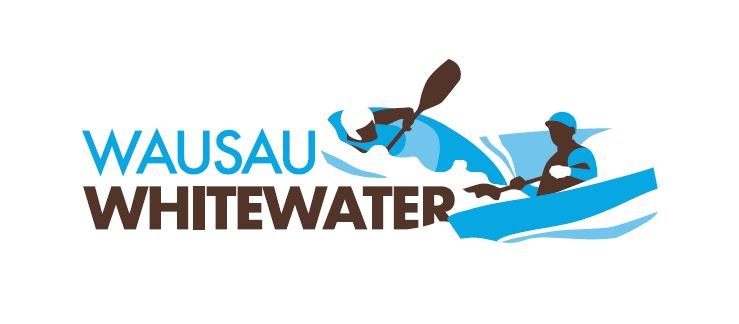River etiquette is established for the safety and enjoyment of all. We want you to enjoy Wausau Whitewater Park to the fullest extent — we’re glad you’re here!
Whitewater Park Etiquette for Paddlers during Recreational Releases:
Paddle at your own risk.
As a paddler you are responsible for your own safety and self rescue.
Be prepared to move out of any play feature or position at any time. Maintain upstream awareness for swimmers or for novice paddlers that may not have control and are unable to eddy out prior to coming through the feature.
A paddler who is already engaged playing in a hole or wave generally has right of way. Upstream paddlers should safely eddy out and wait for the downstream paddler to safely exit the feature before advancing downstream. Refer to VISUAL RIVER SIGNALS below.
Be sure that paddlers above and paddlers below a feature are alerted to any paddlers or swimmers coming downstream through a feature. Refer to VISUAL RIVER SIGNALS below.
Paddlers staged in an eddy waiting their turn to get into a play spot must first let the waiting upstream traffic pass.
Leave adequate room for paddlers coming downstream to gain entrance to the eddy.
Communication in noisy whitewater can be difficult but is still vital for safety. To facilitate this, visual and whistle signals have been created that are an integral part of river etiquette. Here are a few that are commonly in use at Wausau Whitewater Park:
visual river signals:
Vertical Paddle (or arm held upright) held so paddlers above or below the feature can see it and respond. This signal acts as a request for clearance to progress downriver through a feature. Wait for paddlers in or staged at the feature to respond likewise with a vertical paddle/arm. This provides an OK/All Clear to proceed downstream.
Horizontal Paddle held above head (or arms crossed in an “X”) means STOP or do not proceed downstream. Typically this is because there is a paddler already in the feature or there is another situation that needs to be resolved before you continue paddling downstream. Wait to receive a vertical paddle/arm (OK/All Clear) signal to proceed through the feature.
Patting Top of Helmet is a gesture that indicates that you are OK/unharmed or it can be used to ask if a fellow paddler is OK. Paddlers can use this signal in any situation as a question/response to inquire or let fellow paddlers know they are fine.
whistle signals:
3 Blasts indicate an EMERGENCY situation. Unless you have the knowledge and skills to render assistance, eddy out or avoid the area until you better understand the situation.
1 Blast is used to call for the attention of everyone in the area.

